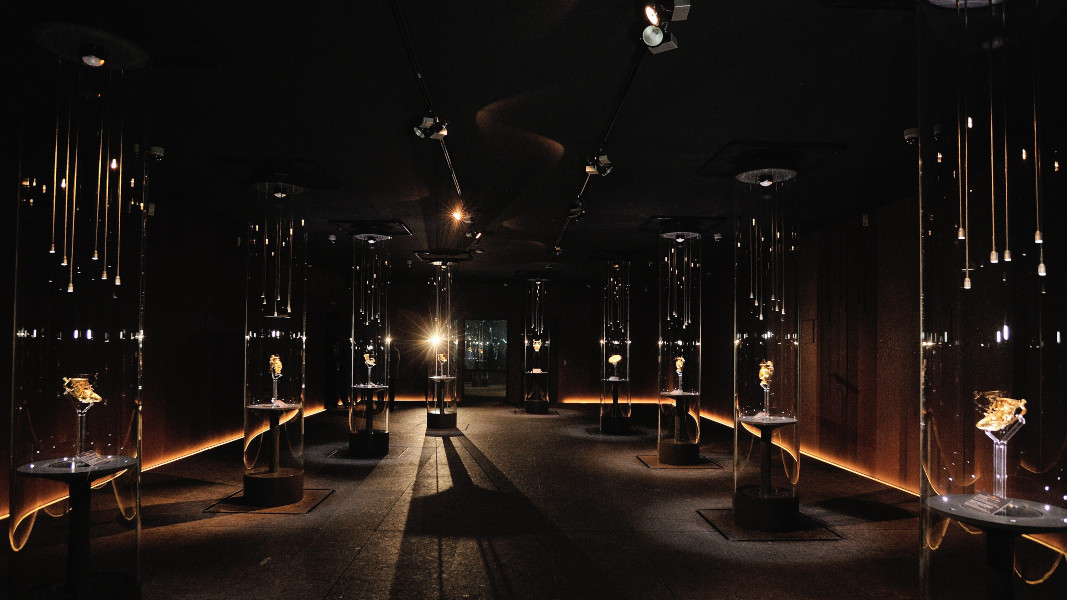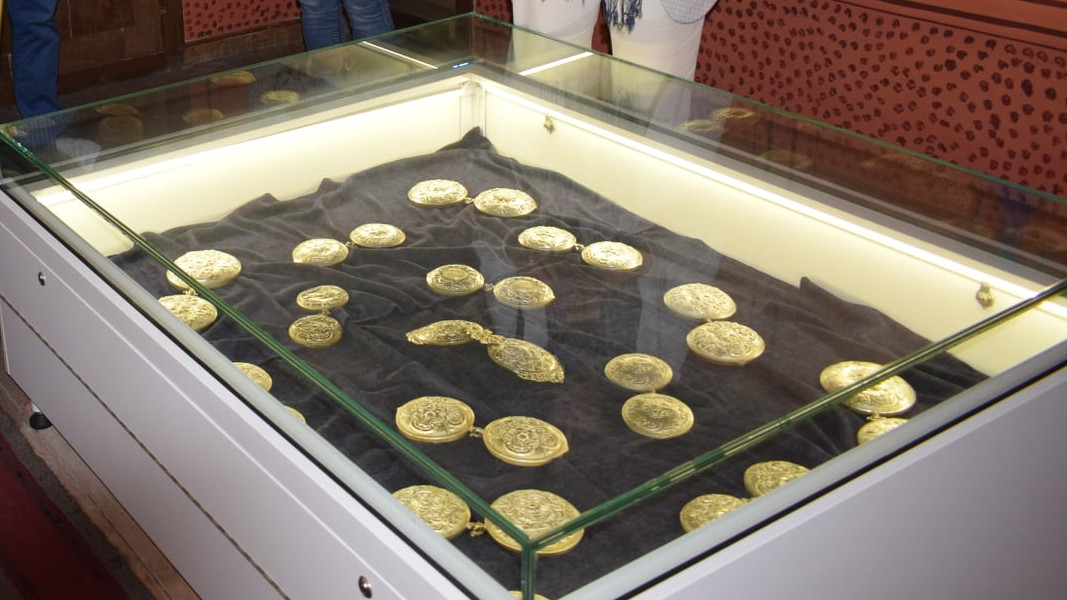The scenic mountain town of Panagyurishte is famous for its rich history and remarkable cultural and historical heritage. Besides the great Renaissance enlighteners and the heroic fighters of the 1876 April Uprising for the liberation of Bulgaria from Ottoman rule, the town is invariably associated with the Thracian gold treasure discovered here in the 1960s. The intricate ornaments on each of the gold vessels show that these lands were once inhabited by unrivalled master goldsmiths who knew the workings of the precious metals to perfection.

The gold artifacts are true masterpieces with their inimitable shapes and rich ornamentation. Jewellery from the period of the First Bulgarian State (from 681 to 1018) - rings and bracelets - have also been found in the vicinity, proving that precious metals were crafted for decoration in these lands as early as the Middle Ages, which led to the emergence and establishment of the Panagyurishte goldsmith school. Unfortunately, today the last representatives of the school are too old, and their descendants have moved away from the craft of the ancestors.
In addition to jewellery, Panagyurishte goldsmiths make sacred vessels and household decorations and utensils. A rich collection of typical exemplars of the local goldsmith school is presented in a special section of the town' s History Museum. These are mainly gold, silver and gilded ornaments inlaid with mother of pearl and precious stones, which used to be an essential part of the ladies' attire, especially of the better-off families.

The theme exposition "Panagyurishte Goldsmith School" is located in Djunovata Kashta (Djuno's House) which was built in the Renaissance style back in 1893. It is no coincidence that the Panagyurishte History Museum pays so much attention to the goldsmithsq as this business played an important role in the general economic and cultural growth of Panagyurishte in the 19th century.

"The exposition traces the emergence and development of the Panagyurishte goldsmith school and the techniques it used: casting, enamel, forging and filigree. The jewellery shown in the exposition testifies to the formation of a traditional school with a distinct style and democratic spirit" - says Irina Boteva, chief curator of the History Museum in Panagyurishte.

"This school dates back to the 18th century. It emerged out of necessity because Panagyurishte women were well-dressed. The appearance of the ladies testified to the wealth of the family, so a woman had to be very elegant. But the goldsmiths also crafted many sacred vessels and crosses for the local churches.

Records show that before the April Uprising (1876) there were 23 goldsmiths' workshops in Panagyurishte, and the population at that time was estimated at 10 thousand - residents of the town and surrounding villages. All the 23 workshops had their own distinctive marks by which their products were recognizable," explains Irina Boteva.
"For instance, local goldsmiths used filigree a lot - it characteristic for their jewellery. In our exposition we have shown not only jewells, but also parts of Panagyurishte clothing of the Revival period. For example, the women's belt buckles here are mainly in filigree. They are made of silver, but there are also gilded ones and ones with elements of mother of pearl.

Goldsmiths' tradition in Panagyurishte continued until the 20th century. The families of goldsmiths were still working at the end of the 80's, 90's. Unfortunately, nowadays there are no hereditary goldsmiths left to work in town. Representatives of one of the well-known families of goldsmiths - The Zlatarevs ("the Goldsmiths") are no longer in this business.
But the fact that the Panagyurishte gold treasure and the Panagyurishte silver treasure were found in these lands means that precious metals were being worked here as early as in Antiquity."
English version: Elizabeth Radkova
Wine culture has been thriving in Bulgaria, with more and more locations and events drawing a growing number of wine lovers and boosting interest in wine tourism. Demand in wine tasting has gone up significantly in 2024, weekend advance bookings..
Bulgaria’s second largest city of Plovdiv is in the top 3 of recommended destinations for the upcoming Christmas and New Year holidays in a ranking by Forbes. Experts from the European Best Destinations organization put Plovdiv in third..
At the official opening of the winter season in Bansko, caretaker Minister of Tourism Evtim Miloshev said that Bulgaria has the potential to become a leading tourist country in the region. It is high time the discussion began among all..

+359 2 9336 661
